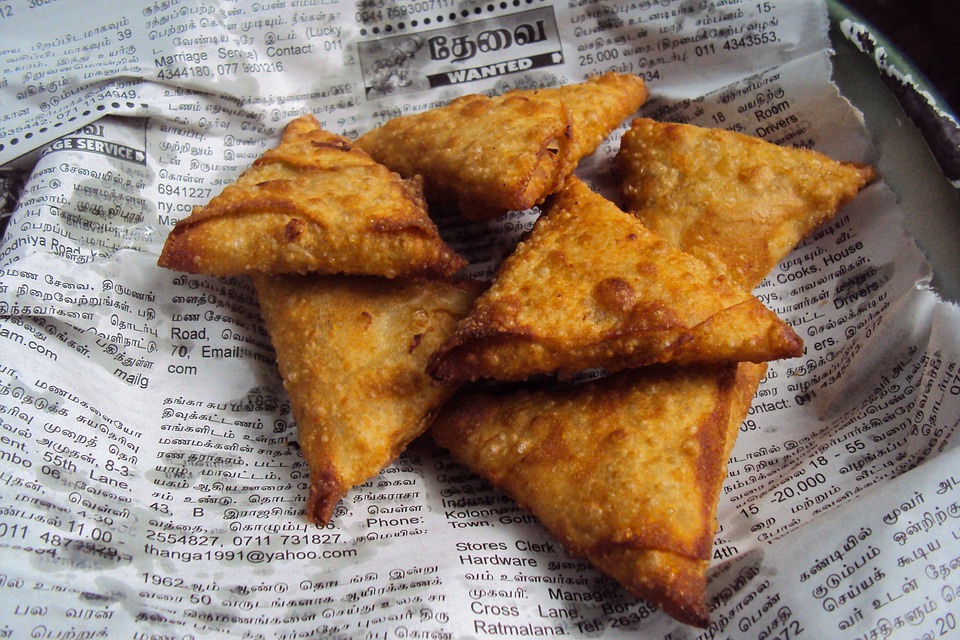Last semester, Laurier University was in the midst of a free speech controversy that erupted when the university punished a teaching assistant for showing her students a YouTube clip of Dr. Jordan Peterson. Over the past couple of years, controversies regarding political correctness have plagued institutions of higher learning across North America, resulting in crosscutting divisions among campuses. McGill is no stranger to a divisive campus — debates over BDS, the Daily, Rez Project, or Students’ Society of McGill University’s (SSMU) countless scandals have made McGillians a less than united student body.
Nevertheless, there is hope, and it comes at the extremely reasonable price of $1. For one Canadian dollar, your token Marxist Mile Ender in cultural studies can briefly venture into the Bronfman Building and happily accept a lukewarm, carb-loaded samosa from a capitalist-loving “finance bro” raising money for their investment club.
Regardless of political partisanship, cultural, or faculty differences, samosas are a unifier at McGill University.
Samosas do not simply unify a couple of students here and there once a week — rather, samosas unite the masses. For instance, the “Samosa Search” and “Samosa Sales” Facebook groups have a combined ten-thousand members and counting. Here, students from every social background and political stripe can communicate and share their love for such a tasty Indian delicacy. Moreover, my research indicates that the samosa Facebook community might actually be the safest space on campus. In an age where Internet trolls of both political extremes are active on almost all Facebook pages, the samosa community has done the impossible: it has united the campus with no trolls to be found.
The samosa Facebook community might actually be the safest space on campus
In the name of investigative journalism, I decided to venture around campus and briefly interview students to see how much they actually knew about samosas. Turns out, the majority of students know less about samosas than they know about politics.
Before reading on, answer the following questions: Who supplies the samosas to McGill clubs? Do clubs actually make a profit? What is inside samosas? How many calories are there in a samosa? And lastly, my favourite: are samosas sufficiently nutritional to be considered lunch?
I imagine most of you went 0 for 5 with the questions. Well here’s the best thing you’ll learn after add/drop.
First, do samosas magically appear in the Leacock lobby, or is there an omnipotent being who provides them to the endless amount of student clubs? It’s actually hard to get this extremely sought-after information. However, I did find out that an Indian restaurant called “Pushap” is one of the main suppliers of the McGill addiction.
Secondly, do clubs make a profit from the samosa revenue? Yes — believe it or not — despite having extremely small profit margins, clubs do make a $20-40 profit per box. Considering thousands of people pass by the Leacock lobby everyday around lunch time, the small profit margins can go a long way to fund clubs, charities and the various other organizations that sell samosas.
Next, I know that while you are stuffing your face with a 3 for $2 deal (and probably are not thinking about this), but what in the world is inside of a samosa? According to Pushap’s website, their veggie samosa is “stuffed with potatoes and spices in a triangular deep-fried pastry” (I know, my stomach grumbled too).
Take a moment, breathe, and mix in a ‘mose’
We know what is in them, but are they healthy? Calorie wise, they are not that bad, especially if you have a male metabolism, with a single samosa clocking in at 300. This ties in directly to the most important question for your parents, because every time you tell them you had samosas for lunch (again!), they cringe and worry that their beloved child is not being properly fed at university.
So, are samosas sufficiently nutritional to be considered lunch? According to Livestrong.com, the average woman should eat about 565 calories per meal, while the average man should eat about 735 calories per meal. This means that if you eat 1-3 samosas, you are in fact having a nutrient rich lunch. To make it a complete meal, you might want to mix in an apple or carrots to get the other vitamins and minerals you need.
In a world where heads of state are arguing over who has the biggest nuclear button, and people are divided over an array of issues (St. Viateur or Fairmount?) only one hero can unite McGill’s campus and, maybe one day, the world. So, next time you find yourself heated over something, take a moment, breathe, and mix in a “mose”.


